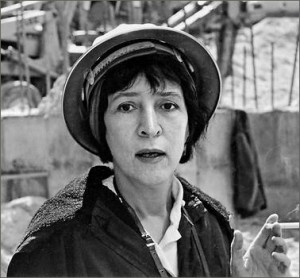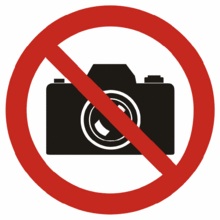Related Research Articles

Diane Arbus was an American photographer. Arbus worked to normalize marginalized groups and highlight the importance of proper representation of all people. She worked with a wide range of subjects including members of the LGBTQ+ community, strippers, carnival performers, nudists, dwarves, children, mothers, couples, elderly people, and middle-class families. She photographed her subjects in familiar settings: their homes, on the street, in the workplace, in the park. “She is noted for expanding notions of acceptable subject matter and violates canons of the appropriate distance between photographer and subject. By befriending, not objectifying her subjects, she was able to capture in her work a rare psychological intensity”. In his 2003 New York Times Magazine article, "Arbus Reconsidered," Arthur Lubow states, "She was fascinated by people who were visibly creating their own identities—cross-dressers, nudists, sideshow performers, tattooed men, the nouveau riche, the movie-star fans—and by those who were trapped in a uniform that no longer provided any security or comfort." Michael Kimmelman writes in his review of the exhibition Diane Arbus Revelations, "Her memorable work, which she did, on the whole, not for hire but for herself, was all about heart—a ferocious, audacious heart. It transformed the art of photography, and it lent a fresh dignity to the forgotten and neglected people in whom she invested so much of herself."
Photojournalism is a particular form of journalism that employs images in order to tell a news story. It is now usually understood to refer only to still images, but in some cases the term also refers to video used in broadcast journalism. Photojournalism is distinguished from other close branches of photography by complying with a rigid ethical framework which demands that the work be both honest and impartial whilst telling the story in strictly journalistic terms. Photojournalists create pictures that contribute to the news media, and help communities connect with one other. Photojournalists must be well informed and knowledgeable about events happening right outside their door. They deliver news in a creative format that is not only informative, but also entertaining.

William Eugene Smith was an American photojournalist. He has been described as "perhaps the single most important American photographer in the development of the editorial photo essay." His major photo essays include World War II photographs, the dedication of an American country doctor and a nurse midwife, the clinic of Dr Schweitzer in French Equatorial Africa, the city of Pittsburgh, and the pollution which damaged the health of the residents of Minamata in Japan. His 1948 series, Country Doctor, photographed for Life magazine is now recognized as "the first extended editorial photo story".
Street photography, also sometimes called candid photography, is photography conducted for art or enquiry that features unmediated chance encounters and random incidents within public places. Although there is a difference between street and candid photography, it is usually subtle with most street photography being candid in nature and some candid photography being classifiable as street photography. Street photography does not necessitate the presence of a street or even the urban environment. Though people usually feature directly, street photography might be absent of people and can be of an object or environment where the image projects a decidedly human character in facsimile or aesthetic.
Lee Friedlander is an American photographer and artist. In the 1960s and 1970s, Friedlander evolved an influential and often imitated visual language of urban "social landscape," with many of his photographs including fragments of store-front reflections, structures framed by fences, posters and street signs.

Helen Levitt was an American photographer. She was particularly noted for street photography around New York City, and has been called "the most celebrated and least known photographer of her time."

Roy Rudolph DeCarava was an African American artist. DeCarava received early critical acclaim for his photography, initially engaging and imaging the lives of African Americans and jazz musicians in the communities where he lived and worked. Over a career that spanned nearly six decades, DeCarava came to be known as a founder in the field of black and white fine art photography, advocating for an approach to the medium based on the core value of an individual, subjective creative sensibility, which was separate and distinct from the "social documentary" style of many predecessors.

Lola Álvarez Bravo was the first Mexican female photographer and a key figure in the post-revolution Mexican renaissance. Known for her high level of skill in composition, her works were seen by her peers as fine art. She was recognized in 1964 with the Premio José Clemente Orozco, by the State of Jalisco, for her contributions to photography and her efforts to preserve the culture of Mexico. Her works are included in the permanent collections of international museums, including the Museum of Modern Art in New York City.
David Redfern was an English photographer specialising in music photography. He worked as a photographer for 45 years and had over 10,000 pictures in his collection including photos of the Beatles and Jimi Hendrix. In 1999 he published a book about his life called The Unclosed Eye.

Nude photography is the creation of any photograph which contains an image of a nude or semi-nude person, or an image suggestive of nudity. Nude photography is undertaken for a variety of purposes, including educational uses, commercial applications and artistic creations. The exhibition or publication of nude photographs may be controversial, more so in some cultures or countries than in others, and especially if the subject is a minor.

The intellectual property rights on photographs are protected in different jurisdictions by the laws governing copyright and moral rights. In some cases photography may be restricted by civil or criminal law. Publishing certain photographs can be restricted by privacy or other laws. Photography can be generally restricted in the interests of public morality and the protection of children.
Valerie Sybil Wilmer is a British photographer and writer specialising in jazz, gospel, blues, and British African-Caribbean music and culture.
Marco Glaviano is an Italian photographer and architect, who has worked for leading fashion magazines and brands on both sides of the Atlantic, and with many of the world's best known models. He has been a pioneer of digital photography, being the first to publish a digital picture in American Vogue in 1982. His photographs of fashion, celebrities, landscapes, and jazz have appeared in numerous museums and are represented in private and public collections worldwide. He is the co-founder of Pier 59 Studios in New York City, which he also helped design.

Dennis Stock was an American journalist and professional photographer.
Social documentary photography or concerned photography is the recording of what the world looks like, with a social and/or environmental focus. It is a form of documentary photography, with the aim to draw the public's attention to ongoing social issues. It may also refer to a socially critical genre of photography dedicated to showing the life of underprivileged or disadvantaged people.
Morten Bo, is a Danish photographer who has specialized in documentary work with a social impact. His 15 travelling exhibitions in the 1970s and 1980s proved quite controversial. In the 1980s, he turned to more abstract photography with lines, contours and contrasts of light and shade. A member of Delta-Photos from 1967 to 1972, in 1973, he was a co-founder of the Ragnarok group. In line with his interest in promoting the art, he founded Fatamorgana, Denmark's school of art photography, in 1989.

Preston is My Paris Publishing (PPP) is a photography-based project that creates publications, site-specific installations, live events, digital applications, education, writing, talks and workshops. It was started in 2009 by Adam Murray and Robert Parkinson as a photocopied zine with the intention of encouraging the exploration of Preston as a subject for creative practice and to focus more attention on the city. It has been described as "politically and photographically aware", "photographing and publishing a view of a disregarded, ordinary Britain" "in a playful way".

Our Saviour's Cemetery is located at the corner of Amagerbrogade and Prags Boulevard in Copenhagen, Denmark.

Jawaani Jaaneman is a 2020 Indian Hindi-language comedy-drama film directed by Nitin Kakkar, and produced by Jackky Bhagnani, Deepshikha Deshmukh, Jay Shewakramani and lead actor Saif Ali Khan under the banners of Pooja Entertainment, Black Knight Films and Northern Lights Films. It stars Saif Ali Khan as a 40 year-old father and debutant Alaya Furniturewala as his daughter, alongside Tabu. The film revolves around Jazz, a property broker and party animal in London, who has to confront a daughter he never knew he had, who is also pregnant.

Birte Høeg Brask nicknamed Trille (1918–1997) was a Danish resistance fighter and physician. During the German occupation of Denmark in World War II, she became a member of the Danish resistance. As a communist, after Germany attacked the Soviet Union in 1941, together with her husband Kjartan Munck, she contributed to the first clandestine publications in Denmark. She went on to collaborate with the writer and resistance fighter Børge Houmann, working as a courier, organizing illegal meetings and contributing to the resistance papers Land og Folk and Ugens Nyt. Continuing her studies after the war, she became a specialist at the children's psychiatric hospital in Aarhus. From 1970 until her retirement in 1988, she held the position of chief consultant. Høeg Brask is remembered in particular for her ground-breaking contributions to autism.
References
- ↑ "Ole Brask Book Jazz People". National Library of Australia, catalogue.nla.gov.au. Retrieved 2010-10-15.
- ↑ "Ole Brask Photographs Jazz". nieswandverlag.de Ole Brask Photographs Jazz. Retrieved 2010-10-15.